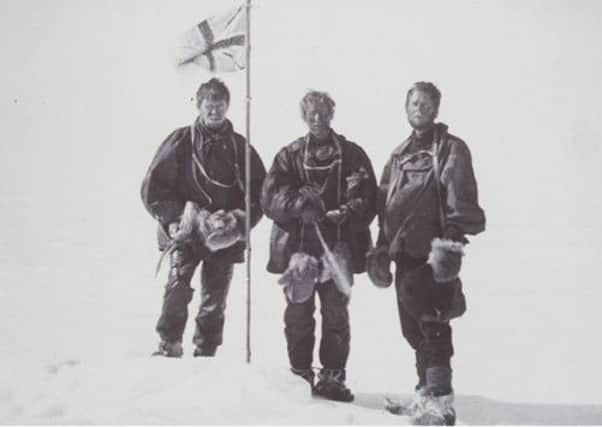Scots polar explorer’s medals to be auctioned


Dr Alistair Mackay made history on 16 January 1909 when he and two other members of Sir Ernest Shackleton’s Antarctic Expedition finally reached the South Magnetic Pole after an arduous three month trek, hauling their sleds behind them across the polar ice cap.
Mackay, who was also in the first party to conquer the 12,448 ft high peak of Mount Erebus - the second highest volcano in Antarctica - died of exposure in 1913 while serving as the ship’s doctor on the ill-fated Karluk expedition, funded by the Canadian Government, to explore the Parry Archipelago in the Arctic Circle.
Advertisement
Hide AdAdvertisement
Hide AdHis collection of rare medals, which include the Polar Medal and the Antarctic 1907-09 Medal, are expected to fetch up to £5000 when they are sold at an auction at Bonham’s auction rooms in Knightsbridge on 16 October.
Dr Mackay was the son of Lieutenant Colonel Forbes Mackay, of the 92nd Gordon Highlanders, and studied medicine at Edinburgh University, graduating with a an M.B and Ch.B before going on to study biology at Dundee University.
He then served in the Boer War as a Trooper and later joined Baden Powell’s police unit before returning to the UK to pass his final exams in medicine.
Mackay, who briefly returned to service in the Boer War as a surgeon, then entered the Royal Navy as a surgeon in November, 1902, serving on both the survey vessel HMS Research and HMS Royal Oak. He then joined Ernest Shackleton’s Antarctic Expedition of 1907-09 as the expedition surgeon.
A spokesman for Bonham’s said: “The expedition arrived on the ship Nimrod at Cape Royds in Antarctica in February 1908 and set up camp in a small expedition hut that would house the 15-man party through the winter.”
In March 1908, together with Douglas Mawson and Professor Edgeworth David, Mackay was in the part of climbers which undertook the first successful ascent of Mount Erebus.
The Bonham’s spokesman explained: “The following spring when Shackleton set off to attempt to reach the South Pole, he despatched Mackay, Mawson and David northward to reach the South Magnetic Pole which lay approximately 650 kilometres North-west of Ross Island. The trek commenced on 5 October, 1908, with the men hauling their own sleds and relaying the loads which meant that every kilometre gained by the sledges involved them travelling three kilometres by foot.
“For ten weeks the men followed the coast north supplementing their stores with a diet of seals and penguins. They then crossed the Drygalski Ice Tongue and turned inland. They still faced a 700 kilometre return journey and established a depot to enable them to transfer their load to one overladen sled and to remove the need to relay. On the 16 January, 1909, they arrived at the South Magnetic Pole, took possession of the region for the British Crown and Mackay suggested three cheers for the King.”
Advertisement
Hide AdAdvertisement
Hide AdMackay died in 1913 after joining the Karluk expedition as the ship’s doctor. The expedition was led by Vilhjalmur Stefansson to explore the regions west of Parry Archipelago for the Government of Canada. After the Karluk, captained by Robert Bartlett, was stranded, crushed, and sunk by pack ice, Mackay and three other members of the crew died of exposure while struggling across the Arctic ice to reach Wrangel Island.
His medal collection also includes the Queen’s South Africa medal 1899-1902 with five bars, and the Cape Colony, Orange Free State and Transvaal medals.
Slessor medals
The sale also features a group of medals, including the Polar Medal and OBE, awarded to another famous Scottish polar explorer, Surgeon Lieutenant Commander Robert Slessor who is one of the few explorers to have had a mountain named after him - the 7,776ft Slessor Peak in Antarctica.